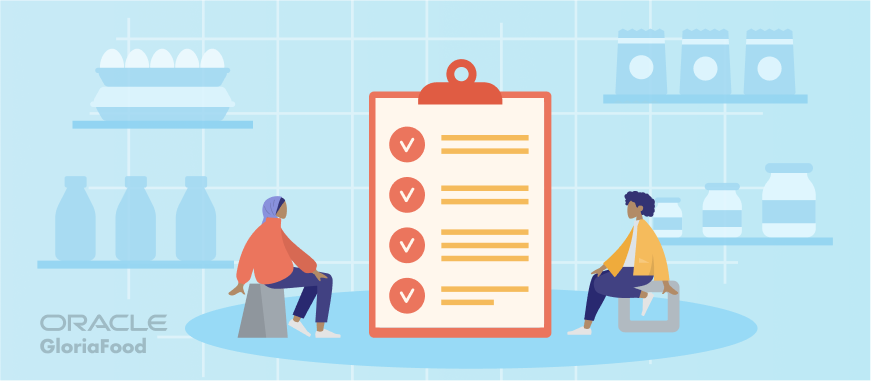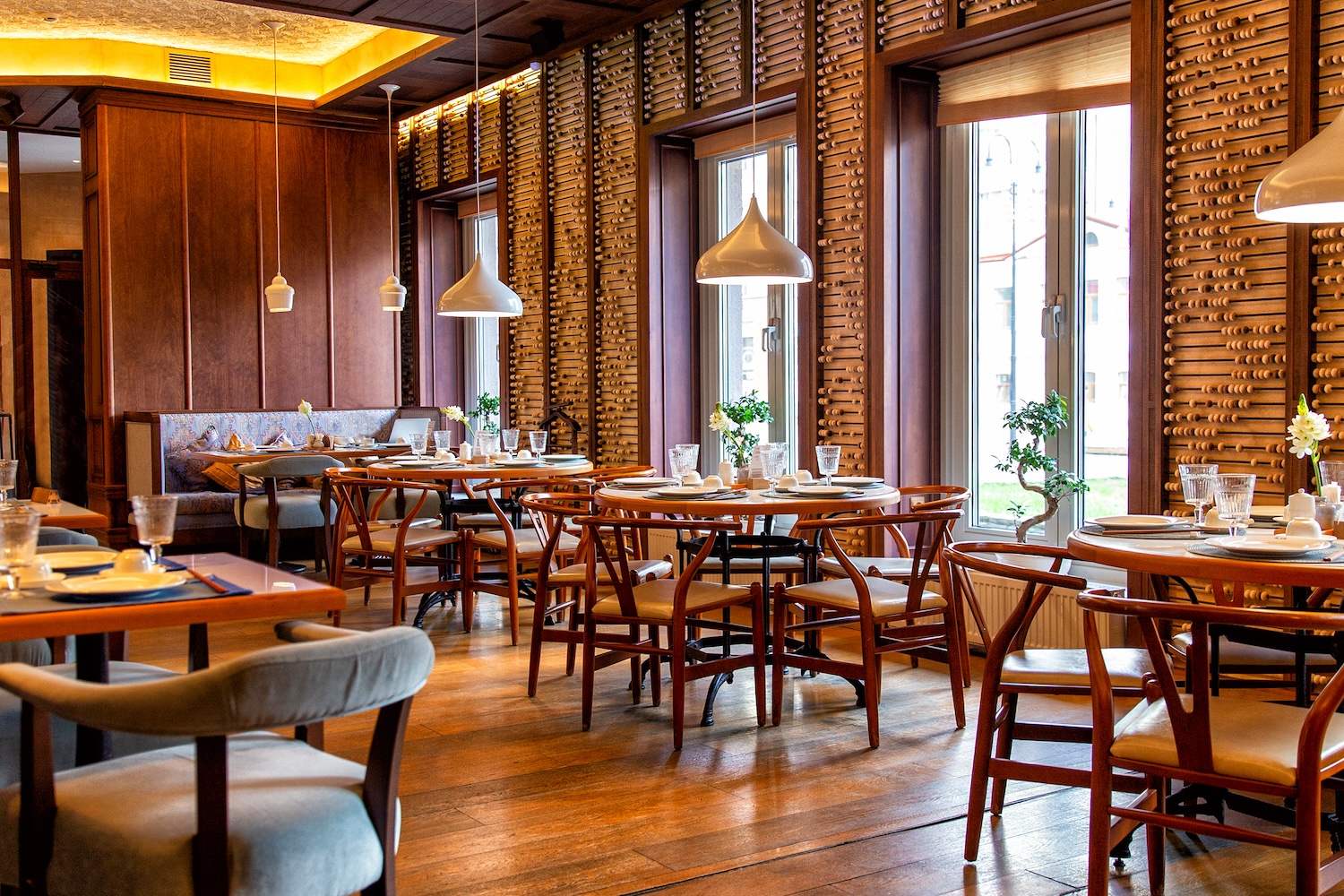- 1.What Is Restaurant Accessibility and Why Is It Important?
- 2.Who Benefits from Improved Restaurant Accessibility?
- 3.How To Improve Restaurant Accessibility
- Conduct an audit to evaluate accessibility barriers
- Gather input from people with disabilities via surveys or interviews
- Implement accessibility features based on your audit and interviews
- Train staff on accessibility for better customer service
- 4.4 Common Ways to Improve Accessibility Physically & Digitally
Want to bring in more customers, build fantastic customer relationships, provide a lovely guest experience, and boost your brand reputation?
Greater restaurant accessibility is the answer.
Read on to find out how you can make your restaurant as accessible as possible, both in-person and online.
What Is Restaurant Accessibility and Why Is It Important?
Restaurant accessibility is all about making your eatery easier and more pleasant for everyone to use, including diners with disabilities.
Accessibility is important for several reasons. Most vitally, it’s ethical to make your restaurant as accessible and inclusive as possible. But this isn’t the only reason.
It is also good for business, good for your brand reputation, and ultimately good for your bottom line.
Plus, it can also keep you compliant with the law. Serious inaccessibility could put you in breach of the Americans with Disabilities Act or ADA requirements for restaurants.
All in all, it’s important to make sure your restaurant is accessible to everyone.
Who Benefits from Improved Restaurant Accessibility?
The answer is everyone. Customers with disabilities will, of course, benefit from any accessibility modifications you make.
Making your restaurant as accessible as possible will make your customer experience much better for a wider variety of people. This alone is a huge benefit.
Your bottom line will also benefit from a more accessible restaurant. More accessibility means more customers, which means additional orders and increased profits.
Similarly, the improved customer experience that comes with it can give a huge boost to your restaurant’s reputation.
Your staff can benefit from improved restaurant accessibility just as much as customers can. Accessibility modifications make life easier for employees with disabilities. This is great for team morale and general job satisfaction.
How To Improve Restaurant Accessibility
Improving restaurant accessibility isn’t simply a case of installing a few ramps for an ADA-accessible route. Accessibility covers a wide range of people and needs, so improving it should be undertaken as a full-scale strategic endeavor.
Here are some ways to build and implement a restaurant accessibility strategy.
1. Conduct an audit to evaluate accessibility barriers
First of all, you need to know what you’re working with. What’s your accessibility like right now, and what are the barriers to improving things?
Accessibility barriers may include things like:
- Physical limitations like a tight restaurant space in which it may be hard to implement restaurant wheelchair accessibility.
- Resource limitations like a lack of funding for making wide-scale accessibility improvements.
- Digital limitations like a lack of experience in creating accessible apps, websites, and online restaurant menus.
Remember, the aim of this exercise isn’t to find reasons not to improve accessibility. It’s to identify challenges to your strategy and consider ways you can overcome them.
2. Gather input from people with disabilities via surveys or interviews
The best way to learn what you need to improve is to ask the people who will be most impacted. So, gather input from people with disabilities on what your accessibility is currently like and how it could be improved.
Surveys, interviews, and focus groups are a great way to get this input. But remember, to get a range of views, you need to provide accessible survey options. Not everyone can take phone calls, and of those who can, many may prefer not to.
If you have an integrated cloud phone system, you should be able to design surveys that can be distributed across various channels and various formats for maximum accessibility.
3. Implement accessibility features based on your audit and interviews
Your interviews and surveys will have told you what accessibility features your customers would benefit from. Your audit will have shown you what your current situation is, what’s possible, and the challenges you will face.
So, now it’s time to come up with a plan and implement it to join other disability-friendly restaurants in your area.
We recommend being as thorough with your accessibility plan as you can. The more accessible you can make your restaurant, the more your customers, your staff, and your business will benefit.
4. Train staff on accessibility for better customer service
One of the most important aspects of your accessibility strategy should be your staff. They must understand the need for accessibility and how it works.
Staff training in this should include things like:
- Disability awareness: This includes showing understanding of hidden impairments, acknowledging all customers, and showing equal respect to everyone.
- Training in relevant disabilities: For example, if you have an elderly clientele, it may be worth training staff in dementia awareness.
- Promoting disability confidence in your staff: Some staff may fail to adequately acknowledge a disabled customer’s needs for fear of doing or saying, ‘the wrong thing.’ Disability confidence training can help with this.
- Practical training: This can include how to work things like chairlifts and hearing loops.
- Assistance training: Help staff understand when to offer assistance and when to hold back. For example, customers with social impairments may need extra understanding when ordering and to be left alone when eating.
4 Common Ways to Improve Accessibility Physically & Digitally
1. Update the physical restaurant’s design and layout
Make sure that customers can move around and interact with your restaurant easily. For example, provide enough space for wheelchair users to maneuver and add alternatives to stairs where possible.
Make sure that there are no obstructions that could endanger the visually impaired, install hearing loops, provide accessible seating, and so on.
You might also like: How to Create an Effective Restaurant Seating Strategy
Similarly, consider the lighting and sound system you use. Flashing or flickering lights can be bad for people with seizure or migraine disorders. Lights that are too bright or sounds that are too loud can prove overwhelming for people with sensory issues.
2. Ensure signage and menus are clear and accessible
Here are the main features of an accessible menu:
- Large, easy-to-read text.
- Accessible fonts.
- Accessible design: for example, make sure that the text stands out against the menu background and that graphics do not intersect with text in confusing or disorienting ways.
- Clear graphics.
- Braille: if you cannot fit Braille descriptions on your menus, consider creating a separate Braille menu for customers with visual impairments.
- Clear allergen information.
- Online menu options: a good restaurant website builder will help you add essential information in a variety of accessible formats and languages, including a clear restaurant menu for online ordering.
3. Follow WCAG & ADA guidelines for restaurant websites
Digital accessibility is crucial in the restaurant industry. Many potential customers check out restaurants online before ordering. If they don’t find the website accessible enough, they will click out and head to a competitor’s site instead.
If your restaurant’s website or app is severely inaccessible, you could be in breach of the Americans with Disabilities Act. To become compliant, it’s a very good idea to update your website according to Web Content Accessibility Guidelines.
If your website or restaurant is outside the USA, you may have different requirements and guidelines to follow. For example, if your website is registered to a .ai domain, it will have different legal requirements than one registered to an American domain, and the ADA will not necessarily apply.
However, it’s still a good idea to follow the WCAG and ADA guidelines, as they provide good advice on how to make your website accessible to customers with disabilities, no matter where you or your website are based.
4. Provide various ordering methods such as via browser and mobile app
Many people have their digital devices configured in ways that are more accessible for them. Putting your menu and restaurant information online or in an app can be very useful for these people.
What’s more, consumers are increasingly growing to expect digital ordering options. If you run a franchise or chain, you may want to create a single branded mobile app for all your restaurants.
Alternatively, you could consider localized domains, such as a .ca domain in Canada and a .co.uk domain in the United Kingdom. This can help you comply with the different accessibility regulations in each country you operate in.
Restaurant Accessibility Benefits Everyone
Accessibility isn’t just good for your customers. It can future-proof your business.
Making your restaurant more accessible shows that you truly care about your customers’ experience. It helps you build a better relationship with your existing customers, bring in new clients, and generally boost your reputation.
There are plenty of ways to make your restaurant more accessible, both offline and online. Ask your staff and customers what accessibility improvements they’d like to see and start building your accessibility strategy today.
This article is a guest post.



